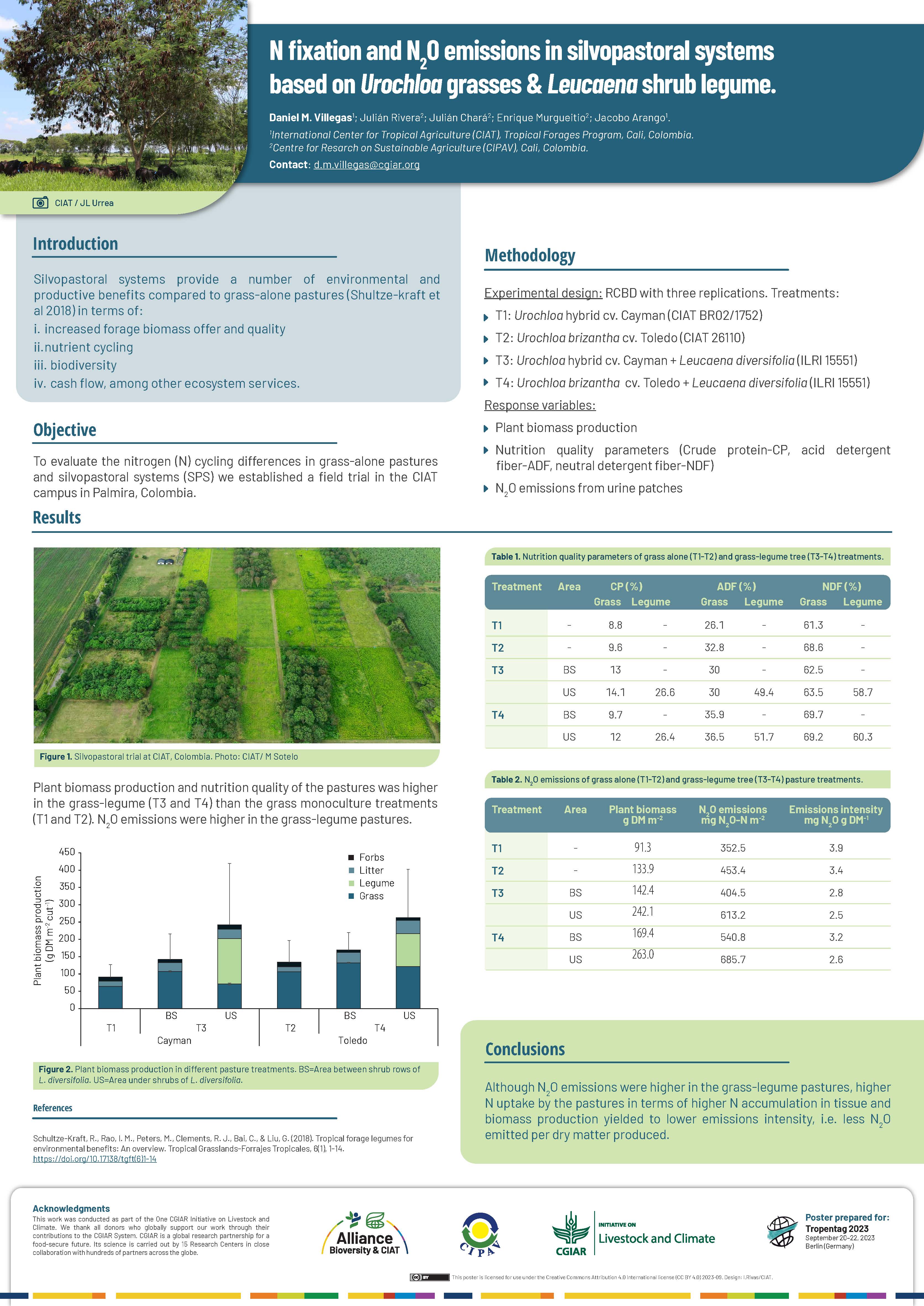
Description
Description
Silvopastoral systems provide a number of environmental and productive benefits compared to grass-alone pastures (Shultze-kraft et al 2018) in terms of:
- increased forage biomass offer and quality
- nutrient cycling
- biodiversity
cash flow, among other ecosystem services
Comments
From nutritional angle inclusion of forage legumes in the diet should be about 30% what does the silvopastoral in the study provide?
Interesting results. Now, they need to be tested under socio-economic and gender lenses remains (with and without access to carbon market scenarios) .
How were N2O emissions measured?
Were N2O emissions assumed to come from urine patches? Were urine patches mapped somehow?
How was N fixation measured?
Add new comment